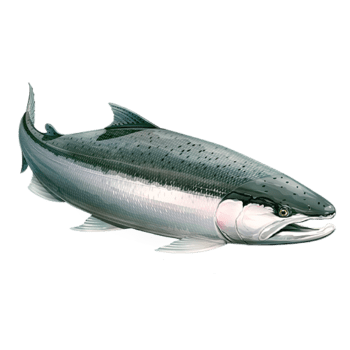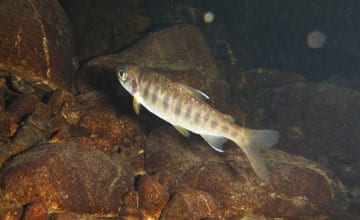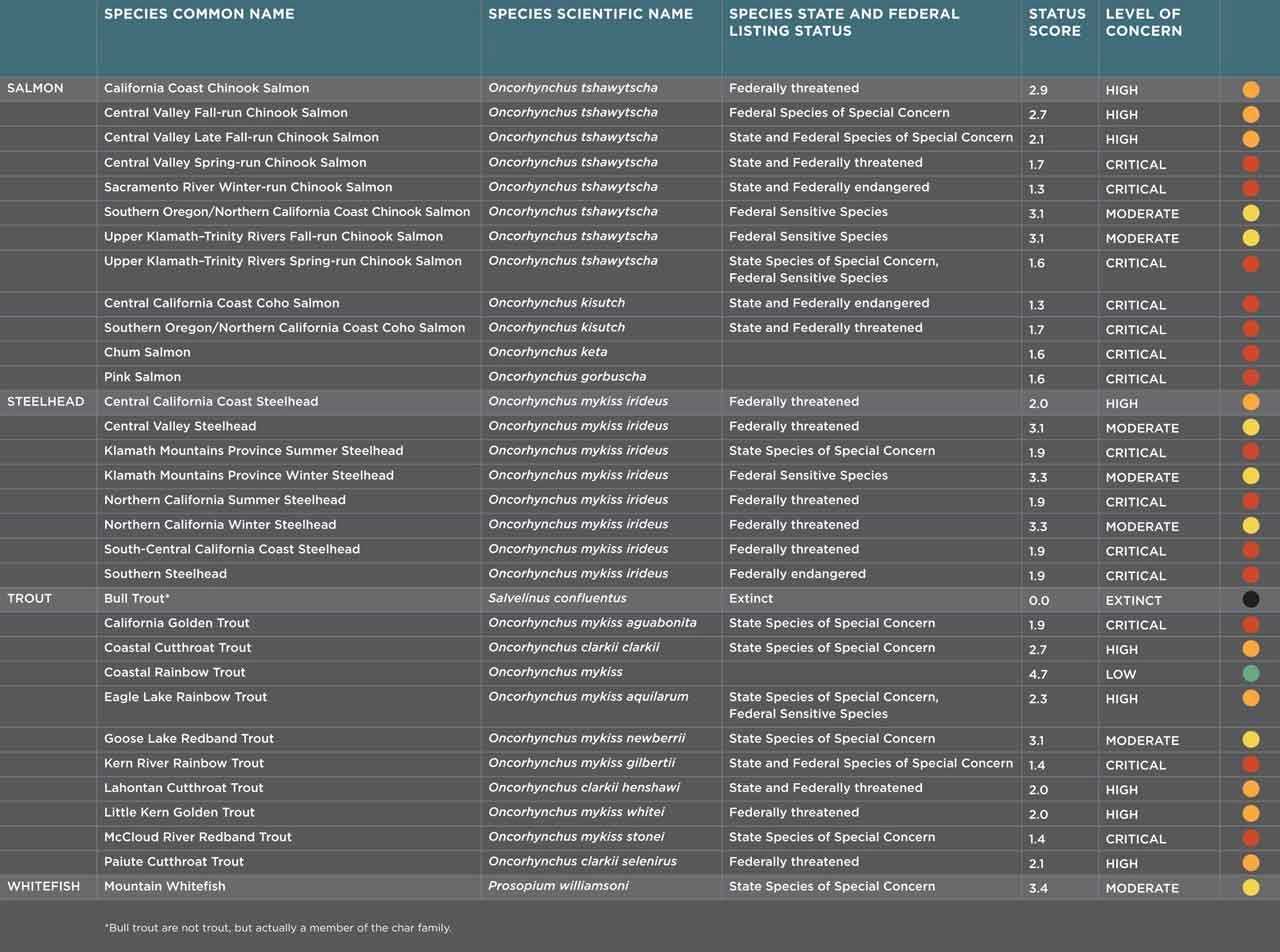How we're working to save them:
- Implement the 2016 Eel River Action Plan with the Eel River Forum partners, which remains the best option for increasing NC summer steelhead runs.
- Integrate statewide coastal salmonid monitoring programs and Habitat Conservation Plans of large private landowners with other restoration activities.
- Work with stakeholders to expand best management practices for land uses that allow water to remain in streams, especially during critical summer months.
- Evaluate the potential for changes to operations of the Eel River dams as part of the Potter Valley Project on the upper mainstem Eel River.
Where to find Northern California Summer Steelhead:
Northern California Summer Steelhead Distribution
Historically, NC summer steelhead ranged from Redwood Creek (Humboldt County) in the north to the Mattole River (Mendocino County) in the south. Today, only a few select watersheds still support summer steelhead, including Redwood Creek and the Mad, Eel, and Mattole rivers. They can be found in the mainstem, upper mainstem, North, Middle, and South forks of the Eel River.
How they Northern California Summer Steelhead Scored:


Characteristics
NC summer steelhead can be distinguished from other steelhead by their run timing, life histories, genetic variation, maturation while in fresh water, and their preferred spawning habitat in higher-gradient habitats and small tributaries.
Abundance
Little historical abundance information exists for NC summer steelhead. Abundance estimates today come mostly from volunteer snorkel surveys in headwater tributaries and mainstem rivers during summer months. The Eel River, which once supported the largest run of NC summer steelhead, has had decreasing adult returns over the last fifty years.
Habitat & Behavior
Summer steelhead migrate further inland into smaller tributaries than winter fish. They spend summer months resting in pools with consistent cool temperatures as they mature, waiting for winter rains to spawn in December-February. NC summer steelhead can tolerate water temperatures up to approximately 23°C (about 73°F) for short periods of time, but seek refuge in deep pools with cool seeps and springs. They prefer pools with boulders, large woody debris, and undercut banks that provide cover from predators and visual separation from other fishes. After spawning, adult fish migrate back to the Pacific Ocean around March. Juveniles leave their natal tributaries from April to June to feed and grow in mainstem rivers and estuary habitats before migrating to sea. Once at sea, most juveniles spend their first months near the coast before moving to the North Pacific Ocean to feed on krill, squid, fish, crustaceans, and amphipods in surface waters.
Genetics
Recent studies found that NC winter and summer steelhead are distinct from one another. NC summer steelhead are more closely related to NC winter steelhead than they are to summer steelhead from other regions in California. NC summer steelhead have a genetic variation similar to spring-run Chinook salmon that influences run-timing to fresh water, which allows them to access higher elevation and smaller tributaries for spawning.






















 Dams block access to historical spawning and rearing habitats. Downstream, dams alter the timing, frequency, duration, magnitude, and rate of change of flows decreasing habitat quality and survival.
Dams block access to historical spawning and rearing habitats. Downstream, dams alter the timing, frequency, duration, magnitude, and rate of change of flows decreasing habitat quality and survival.